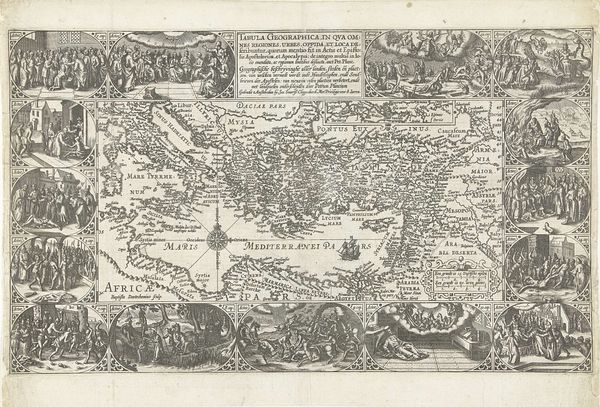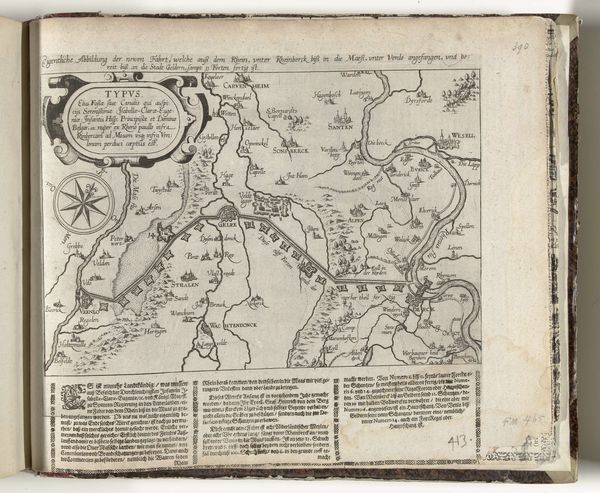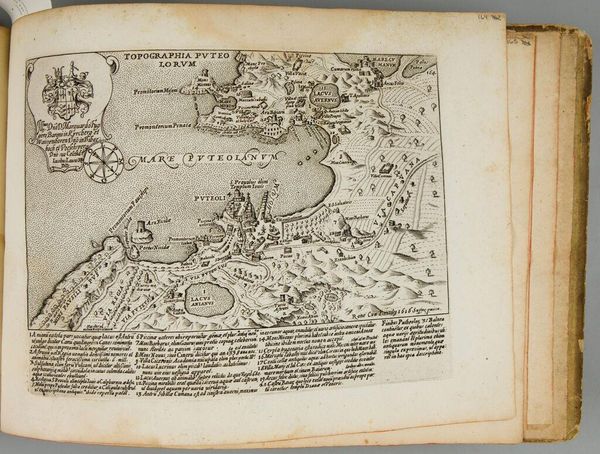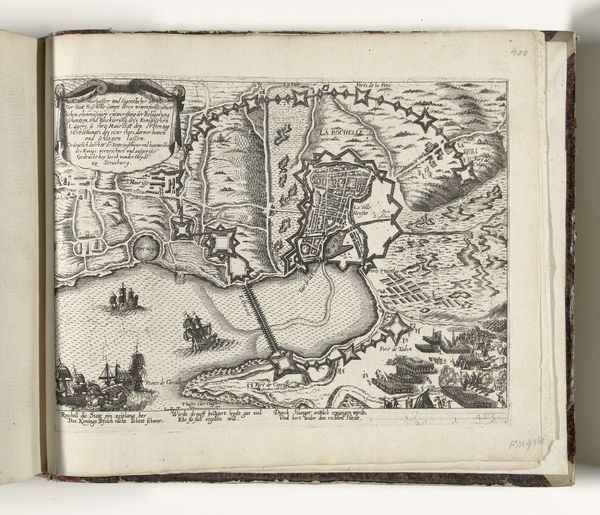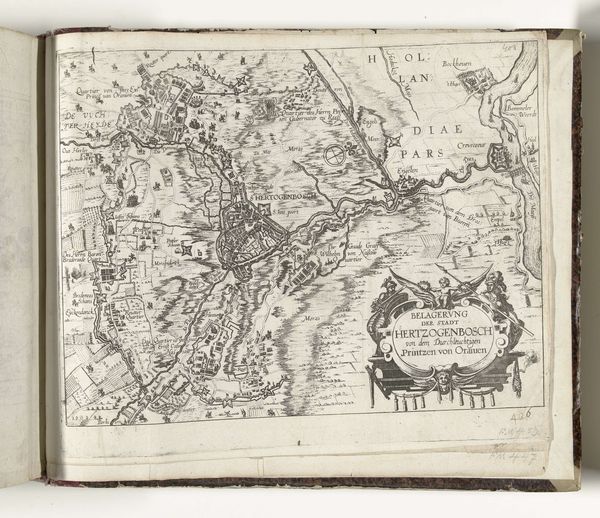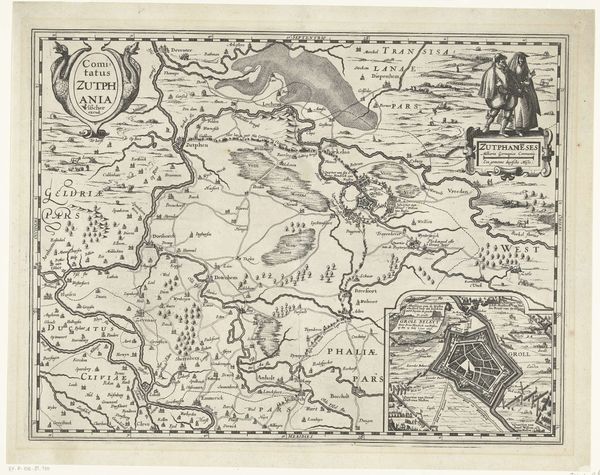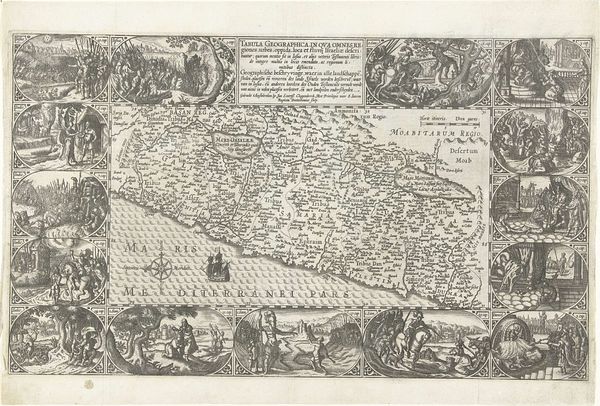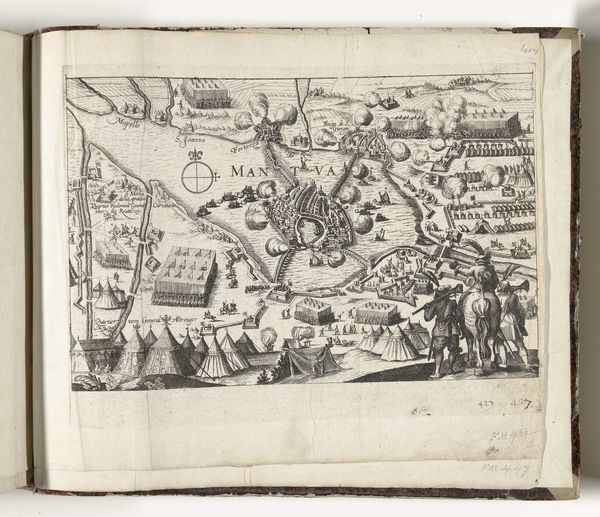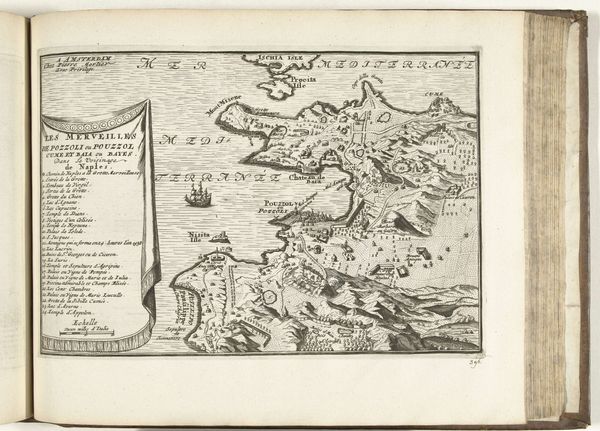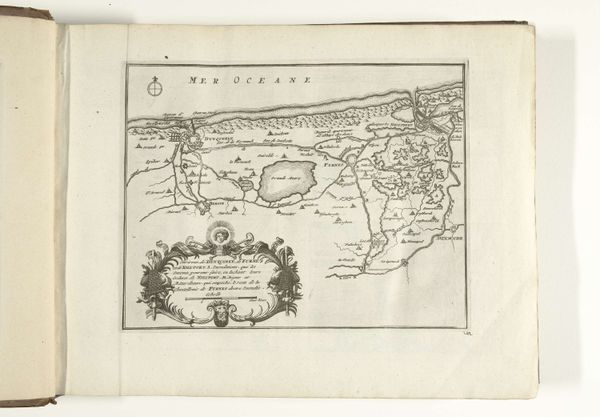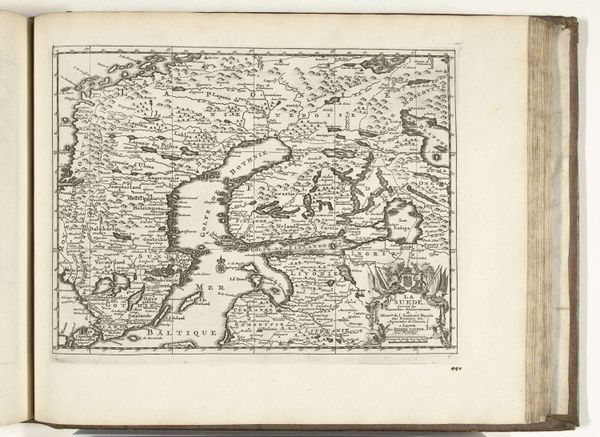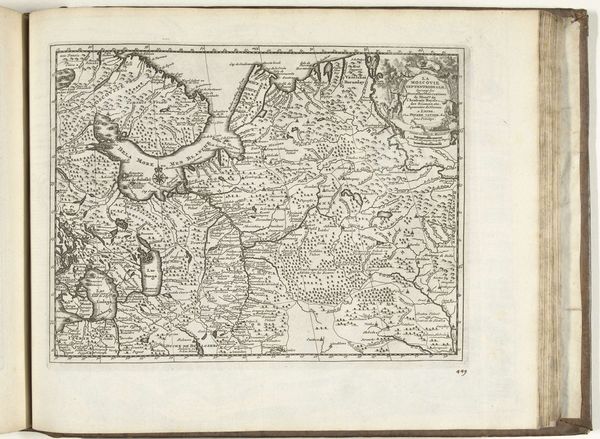
Titelpagina van het pamflet: Walvisch van Berckhey (...) ghestrandet is Anno 1598. den 3 Februarij, 1599 1590s
0:00
0:00
print, paper, ink, engraving
#
dutch-golden-age
# print
#
landscape
#
paper
#
ink
#
cityscape
#
history-painting
#
engraving
Dimensions: height 200 mm, width 160 mm
Copyright: Rijks Museum: Open Domain
Curator: Look at this intriguing title page from the late 1590s, titled "Walvisch van Berckhey…", which translates to "Whale of Berckhey." It's an engraving printed on paper, presumably part of a pamphlet. Editor: It's fascinating! Immediately, the contrast between the highly detailed map-like composition and the almost cartoonish whale figure at the bottom grabs my attention. It evokes a feeling of both precision and something fantastical… almost absurd. Curator: Indeed. It's a curious juxtaposition. This piece combines geographical elements with a depiction of an extraordinary event—the stranding of a whale near the town of Berckhey in February of 1598. You see how the map details cities and battles alongside this cetacean phenomenon. Editor: So it’s a hybrid. Is it trying to chronicle, mythologize, or…perhaps critique the relationship between man, nature, and even political events through material form? Curator: Exactly. Note the details: cityscapes like Orsoy and Calcar, military figures—even the text explaining "the arrival of the Spanish Army." The printing press itself allows for wider accessibility of events and views. Consider paper as a material of protest during those conflicts too. Editor: You're drawing out how it merges several genres, making its social and artistic implications much more complicated. I think the rather dry, topographic elements surrounding the creature inadvertently draw it further into a very weird focus. It’s as though a map suddenly birthed a sea monster from folklore. Curator: Right! Also think about the production of paper at this time. It was not simply a neutral surface but a manufactured entity tied to trade networks and cultural exchanges. Even the ink becomes important if it helped spread opinions against Imperial forces using cheap or expensive inks. Editor: This is also an aesthetic object deeply rooted in that exact historical moment. As a complete piece, it's both informational and theatrical—factual but embellished with visual punch, isn't it? Curator: Precisely. By exploring these connections we learn not only about the making and the distribution but the many meanings a humble print like this might transmit! Editor: Yes—reconciling these different viewpoints opens new perspectives. It’s much more potent now to understand that it did exist during these periods—even as a simple guide’s image.
Comments
No comments
Be the first to comment and join the conversation on the ultimate creative platform.
